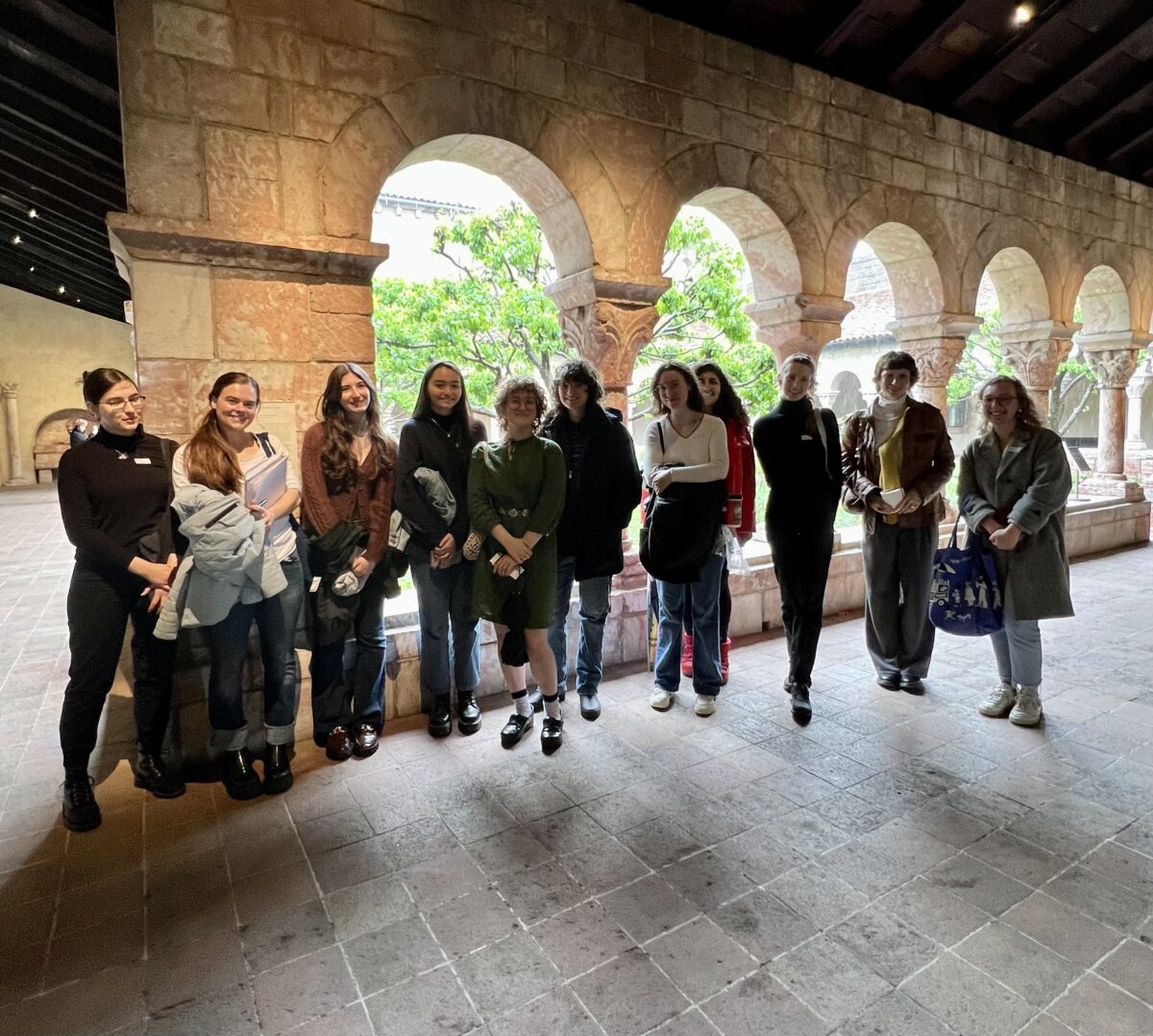Barnard, Columbia, and Sarah Lawerence Students at a Visit to the Cloisters Museum
For many New York City students, museums, particularly the Metropolitan Museum of Art, are the go-to sightseeing outings and cultural destinations. Yet, many visitors may find the crowds and unending rooms of art daunting, so they just end up catching a glance at a piece on their must-see list and move on. But for any student interested in diving deeper, especially back into the Middle Ages, Barnard alumna Dr. Gillian Adler may have the answer.
As president of the New York Medieval Society (NYMS), Adler will tour New York undergraduate and graduate students interested in the Middle Ages at the MET this academic semester.
“One of the special things is that the MET is open till 9 PM on Friday and Saturday nights,” says Adler. “But what happens is after about seven o’clock, the museum really starts to empty out and you can end up in galleries completely alone. You’re getting the sense of being transported to a different time and place by being alone in some of the wings.”
As part of the tour, Adler plans to lead groups around the museum to study Medieval objects and learn about the culture and phenomena of the period.
“The goal of those evenings at the Met is to really get students who are interested in the Middle Ages from different academic institutions in New York together to learn from each other and identify shared topics that we’re exploring in our classes and our own research,” says Adler. “It’s definitely open to students with a range of backgrounds and interests.”
Adler, a humanities professor at Sarah Lawrence College and a lecturer in English and comparative literature at Columbia University, says her interest in studying the Middle Ages stems from her Barnard first-year English class, where she was struck by the proto-feminist voice of poet Geoffrey Chaucer.
“I think a lot of my interests at Barnard had to do with the spirituality and this distinctive spirituality that emerges, really between the 12th and 15th centuries, among women who have mystical visions and are circumventing typical ecclesiastical rules about who gets to access God,” says Adler. “You start to see women who have a different kind of voice and are even writing their own texts.”
Adler, who authored two books focused on the subject of time and temporality in medieval life, expresses that the Middle Ages remains an important facet of history to study.
“I think there’s a Manet and Degas exhibition coming up at the Met, and it might lead people to overlook the medieval, which can sometimes feel like a past that is too far away to relate to, especially because it’s filled with religious art and devotional objects,” says Adler. “There’s this sense of interiority that we find in the works of Dante and Chaucer and the spiritual writers. This sense of trying to look within to find a more profound, eternal truth.”
To learn more about Dr. Adler’s tours, visit nymedieval.org/students-museum.

